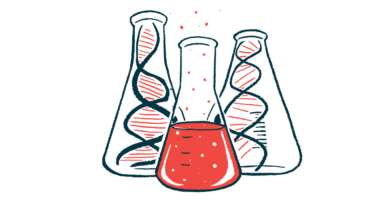Tavneos linked to remission in ANCA-associated vasculitis
Rates after year of treatment were higher than Phase 3 ADVOCATE trial

Tavneos (avacopan) safely and effectively promotes clinical remission in people with newly diagnosed or relapsing ANCA-associated vasculitis (AAV), according to a multicenter, real-world study in the U.S.
The remission rates after a year of treatment were higher than those in the Phase 3 ADVOCATE trial (NCT02994927), whose data supported Tavneos’s approval (84% vs. 65.7%). The real-world study also featured patient populations excluded from the Phase 3 study, including those with advanced kidney disease, those who required dialysis to replace kidney function, or those receiving plasma exchange, a blood-cleaning procedure.
The study, “Real-World Experience With Avacopan in Antineutrophil Cytoplasmic Autoantibody-Associated Vasculitis,” was published in Kidney International Reports.
AAV is an autoimmune condition that features inflammation and damage to small blood vessels. It’s typically caused by ANCAs, that is, self-reactive antibodies that wrongly bind to neutrophils, a type of immune cell, triggering an immune reaction against the cells that line blood vessels.
Amgen’s Tavneos is an oral therapy that’s designed to block the receptor protein for C5a, a component of a part of the immune system that’s excessively activated in AAV, contributing to inflammation and small blood vessel damage.
It was approved in the U.S. in October 2021 to treat adults with severe active microscopic polyangiitis (MPA) and granulomatosis with polyangiitis (GPA), the two most common types of AAV. Taken twice daily, it’s meant to be used with standard therapy, including glucocorticoids.
Its approval was based mainly on the ADVOCATE study, which tested Tavneos against the glucocorticoid prednisone in 331 AAV patients receiving standard care.
The therapy was superior to prednisone in promoting long-term remission and improving kidney function, while reducing the use and dosage of glucocorticoids, which are linked with serious side effects with long-term use.
Remission rates with Tavenos
Here, researchers in the U.S. retrospectively analyzed data from 92 adults with active AAV who were treated with Tavneos at 12 medical centers between its approval and May 2023 to obtain post-marketing data on it for treating AAV.
Most were women (64%) and newly diagnosed with AAV (66%), with only 34% having relapsing disease. Nearly three-quarters (72%) had ANCAs against the myeloperoxidase enzyme, one of the two most common targets of AAV-driving ANCAs.
At the start, most patients (77%) had kidney involvement, as reflected by a lower than normal glomerular filtration rate (eGFR). Also, 21 patients (23%) had kidney failure and nine required kidney replacement therapy such as dialysis.
The patients received Tavneos for at least two weeks and up to a year plus standard remission induction therapy, which most commonly included the glucocorticoid methylprednisolone into a vein and rituximab, which kills antibody-producing immune cells. Thirteen patients underwent plasma exchange. For nearly three-quarters of the patients (71%), this was followed by maintenance of remission therapy, most often rituximab.
Patients had a mean age of 59 when they started induction therapy and were followed for a median of six months. Tavneos was started at a mean of 3.6 weeks, or about a month, after induction therapy.
Clinical remission was achieved by 61 of 68 patients (90%) after 26 weeks, or about 6.5 months, and by 32 of 38 patients (84%) after a year. Among those with kidney involvement and evaluable data at these timepoints, the mean eGFR change from the start of induction therapy was 12.2 after 6.5 months, and 19.8 after a year.
At the last follow-up, five of nine patients (56%) were free of kidney replacement therapy and two others started dialysis. A clinical relapse occurred in 3% of the patients, while infections that required hospitalization occurred in 13%. Also, 4% of the patients died, one due to ovarian cancer and three from severe COVID-19.
Most patients (89%) were on glucocorticoids 30 days after induction therapy. Statistical analyses showed those on Tavneos before day 30 were more likely to discontinue glucocorticoids over those starting Tavneos after day 30.
Overall, 19% of the patients discontinued Tavneos due to side effects, the most common being elevated blood levels of aminotransferases (4.3%), a sign of liver damage, which is consistent with the ADVOCATE findings.
“To our knowledge, this is the largest post-marketing study of [Tavneos] published to date,” wrote the researchers, who said they found “high rates of remission, no concerning safety signals, and successful use in previously unstudied patient populations.” they said there was a wide variability of glucocorticoid use, along with substantial delays in starting Tavneos, which “undermines the utility of the drug”, such that practitioners would likely have to “rely on glucocorticoids during this time.”







